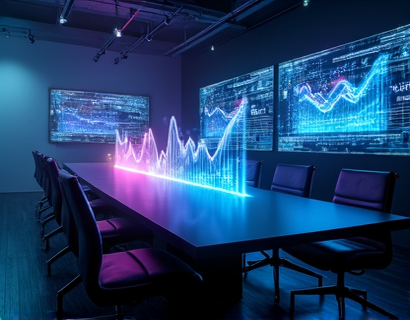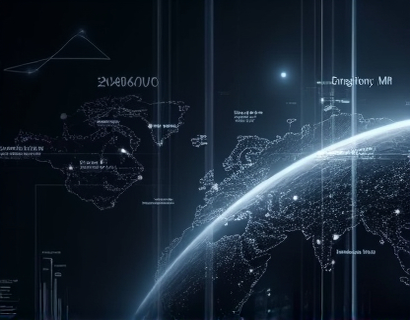Transforming Aquarium Management: The Impact of Advanced Software on Operations and Customer Engagement
The aquarium industry has witnessed significant advancements in recent years, particularly with the introduction of sophisticated software solutions designed to streamline operations and enhance customer engagement. These tools are revolutionizing the way aquarium owners and managers operate their businesses, offering a range of benefits that extend from efficient inventory management to improved customer experiences. This article delves into the transformative power of advanced aquarium management software, exploring how it can optimize daily tasks, ensure precise tracking of aquatic life, and ultimately provide a competitive edge in a crowded market.
Streamlining Inventory Management
One of the most critical aspects of running a successful aquarium is managing inventory effectively. Advanced software solutions offer robust inventory management tools that allow operators to track and manage their stock with unprecedented precision. These systems can automatically update stock levels as items are added or removed, reducing the risk of overstocking or stockouts. By maintaining optimal inventory levels, aquariums can ensure that they always have the necessary supplies on hand to meet customer demand without incurring unnecessary storage costs.
Moreover, these software platforms often include features such as barcode scanning and RFID technology, which simplify the process of tracking individual items. This level of detail ensures that every piece of equipment, from filters to feeders, is accounted for and easily locatable. The ability to generate detailed reports on inventory usage and trends provides valuable insights that can inform purchasing decisions and help reduce waste. For instance, the software can identify patterns in supply consumption, allowing managers to forecast future needs and negotiate better deals with suppliers.
Precision in Tracking Aquatic Life
Tracking the health and well-being of aquatic life is paramount in an aquarium setting. Advanced management software offers tools that enable precise monitoring of each species, from water parameters to feeding schedules. This level of detail is crucial for maintaining the health of the aquatic environment and ensuring the longevity of the exhibits.
The software can integrate with sensors and other monitoring devices to provide real-time data on water quality, temperature, and other critical factors. Alerts and notifications can be set up to inform staff of any deviations from optimal conditions, allowing for prompt action to be taken. This proactive approach to maintenance not only improves the health of the aquatic life but also enhances the overall visitor experience by ensuring that exhibits are always in top condition.
Additionally, the software can track individual animals, including their species, age, and health history. This information is invaluable for breeding programs and educational displays, as it allows staff to provide accurate and engaging information to visitors. The ability to monitor growth and development over time also aids in making informed decisions about future acquisitions and exhibit design.
Simplifying Daily Tasks
Operating an aquarium involves a multitude of daily tasks, from cleaning and maintenance to customer service and educational programs. Advanced software solutions can significantly simplify these tasks, freeing up staff to focus on more strategic and customer-facing activities.
Scheduling and task management features allow operators to create and manage detailed schedules for staff, ensuring that all tasks are completed efficiently and on time. The software can automatically generate shift schedules based on staff availability and workload, reducing the administrative burden on management. Task lists and reminders can be assigned to specific team members, ensuring that nothing falls through the cracks.
Customer service is another area where software can make a significant impact. By integrating customer relationship management (CRM) tools, aquariums can maintain comprehensive records of visitor interactions, preferences, and feedback. This data can be used to personalize the visitor experience, such as sending targeted promotions or offering special discounts based on past visits. The software can also streamline the process of handling customer inquiries and complaints, providing a consistent and professional response to all interactions.
Enhancing Customer Engagement
In today's competitive landscape, customer engagement is more important than ever. Advanced aquarium management software offers features that can significantly enhance the visitor experience, leading to increased customer satisfaction and repeat business.
Interactive exhibits and digital displays are becoming increasingly popular in aquariums, and software can play a crucial role in their implementation. QR codes and NFC tags can be used to provide visitors with additional information about the exhibits they are viewing. The software can manage the content for these displays, ensuring that visitors have access to up-to-date and engaging information. Augmented reality (AR) experiences can also be integrated, allowing visitors to explore virtual aspects of the exhibits that complement the physical displays.
Social media integration is another key feature that can boost customer engagement. The software can automatically post updates and photos from the aquarium to the institution's social media accounts, keeping followers informed and excited about new exhibits and events. Visitors can also be encouraged to share their experiences on social media, with the software providing tools to create shareable content and track engagement metrics.
Educational programs and workshops can be more effective with the support of advanced software. The platform can manage registration, track attendance, and provide educational materials to participants. Interactive elements such as quizzes and games can be incorporated into these programs, making learning more engaging and memorable for visitors of all ages.
Optimizing Business Performance
Beyond improving day-to-day operations and customer experiences, advanced management software can significantly enhance overall business performance. By providing comprehensive data and analytics, operators can make informed decisions that drive growth and profitability.
Financial management tools within the software can help track revenue, expenses, and profit margins in real-time. This level of visibility allows managers to identify areas where costs can be reduced or optimized, such as energy consumption or supply purchases. The software can also generate detailed financial reports for budgeting and forecasting purposes, ensuring that the aquarium remains financially healthy and sustainable.
Marketing and promotion efforts can be more targeted and effective with the data provided by the software. Customer segmentation based on visit patterns, preferences, and demographic information allows for tailored marketing campaigns that resonate with specific audience groups. The software can track the effectiveness of these campaigns, providing insights into which strategies are yielding the best results and where adjustments may be needed.
Furthermore, the software can facilitate online booking and ticketing systems, making it easier for visitors to plan their visits and purchase tickets in advance. This not only improves the visitor experience by reducing wait times at the entrance but also provides valuable data on visitor trends and preferences. The software can analyze this data to optimize exhibit layouts, timing, and staffing, ensuring that the aquarium is always running at peak efficiency.
Conclusion
The integration of advanced aquarium management software represents a significant step forward in the evolution of the aquarium industry. By streamlining operations, enhancing customer engagement, and optimizing business performance, these tools offer a comprehensive solution for aquarium owners and managers. As the industry continues to grow and evolve, embracing such technologies will be essential for staying competitive and delivering exceptional experiences to visitors.










































